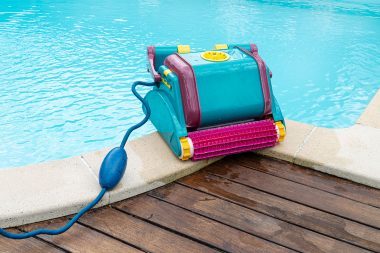What is sweat equity in real estate? Is it worth the risk?
Updated Wed, Nov 5, 2025 - 6 min read
Top blog articles
There’s a reason owning real estate gives you a lot of peace of mind – it gives you a great opportunity to build home equity once you pay off the mortgage. Another way of increasing your home value, and your portion of ownership, is through sweat equity. You can do this with ROI-enhancing DIY home improvements. All the hard work, thinking, and time you invest in your property will add considerable sweat equity.
How does sweat equity work in the real estate industry?
In real estate, if you work hard and spend time improving your home yourself instead of hiring someone else, you gain sweat equity. It means you’re increasing your home’s value without spending extra money, just by working hard.
This was quite evident during the pandemic when many homeowners did DIY projects to make their homes worth more.
House flippers often do a lot of hard work themselves. They usually buy a cheap run-down house that needs a lot of repairs and work really hard to make the house nice enough to sell for more money. If the housing market is good, all that effort goes into making a significant profit.
Another example of sweat equity is when in rent-to-own scenarios, certain landlords permit tenants to build equity by taking on tasks such as repairs or maintenance that would typically fall under the landlord’s obligations.
How does sweat equity affect a home’s value?
Sweat equity means increasing your home’s value by doing the work yourself. And, not pay someone else to do it. For example, if your house doesn’t have a deck in the yard, a sunroom, or an outdoor patio, but you know how to build one, you can do it yourself. When you sell your home, a buyer might pay more because of the additional living space you offer.
But remember, even with sweat equity, you may still need to buy materials. For instance, if you want new kitchen countertops, you’ll have to pay for the materials. However, you save money by not hiring a contractor to do the removal and installation for you.
Which are the best value-adding DIY projects?
Sometimes little do-it-yourself projects can increase your home’s value through sweat equity. The best value-adding do-it-yourself projects are often those that enhance the functionality, aesthetics, or energy efficiency of your home without breaking the bank. Some top choices include simple kitchen or bathroom upgrades such as painting cabinets, replacing hardware, or installing a new backsplash. Adding a fresh coat of paint to both the interior and exterior of your home can also work wonders.
Energy-efficient improvements such as sealing drafts, insulating your attic, updating electrical work, or installing a programmable thermostat not only make your home more comfortable but can lead to long-term savings. Finally, enhancing your home’s curb appeal with DIY landscaping or a well-maintained lawn can significantly boost its value.
How do you calculate sweat equity?
To figure out how much your hard work has increased the value of your property, begin with the price you initially paid for your home. Let’s say you decide to do three home upgrades yourself: renovating the kitchen, remodeling the bathroom, and painting the inside of the house. Once the improvements are done, a home appraisal reveals that your property is now worth more than before.
You need to consider changes in the market, as well as the total material cost for these projects. Once you subtract all of these, you will know the exact value you recouped through sweat equity.
Key takeaway
The term sweat equity refers to adding value to an asset through sheer hard work. If you possess handy skills and can allocate the necessary time, you can forgo hiring a contractor and save on considerable expenses on your home improvement projects. Once the project is completed and your hard work has paid off, you will enjoy the benefits of an increased property value.
The bottom line is that such equity refers to the value added to a property through the labor, time, and effort an individual or investor puts into it. This is typically achieved through renovations, repairs, or improvements, rather than through monetary investment.
Remember that sweat equity can be a valuable strategy when investing in real estate, but it requires careful planning, hard work, and attention to detail to ensure that it enhances a property’s value and profitability.
FAQs
What is one of the most common examples of utilizing sweat equity?
Successful examples include individuals who buy distressed properties, renovate them extensively through their own efforts and toil, and then sell them at a higher price, generating a significant return on investment.
Real estate investors engage in house flipping for profit. They leverage their own labor and effort to enhance the value of properties through repairs and renovations before listing them for sale.
How can I earn sweat equity in the real estate industry?
You can earn sweat equity by DIY renovations, maintenance, and improvements. This might include tasks such as painting, carpentry, landscaping, or any other work that enhances the property’s condition and value.
Is sweat equity taxable?
Sweat equity is generally not taxable, as it represents your personal effort rather than a financial investment. However, tax laws can vary, so it’s advisable to consult with a tax professional for specific guidance.
Is there a downside to sweat equity?
Well, the main problem is that sometimes the hard work you put in might not increase your home’s worth. Just like if you start a new company, and spend a huge amount of time and effort on it, but the company fails, your work might not be worth anything. Similarly, if you fix up your own house, but do a bad job, you’re the one who loses out.
Can I use sweat equity to finance my next property purchase?
Some lenders may consider sweat equity as part of your down payment if you are purchasing a house. However, specific eligibility criteria and requirements vary by lender and loan type.









